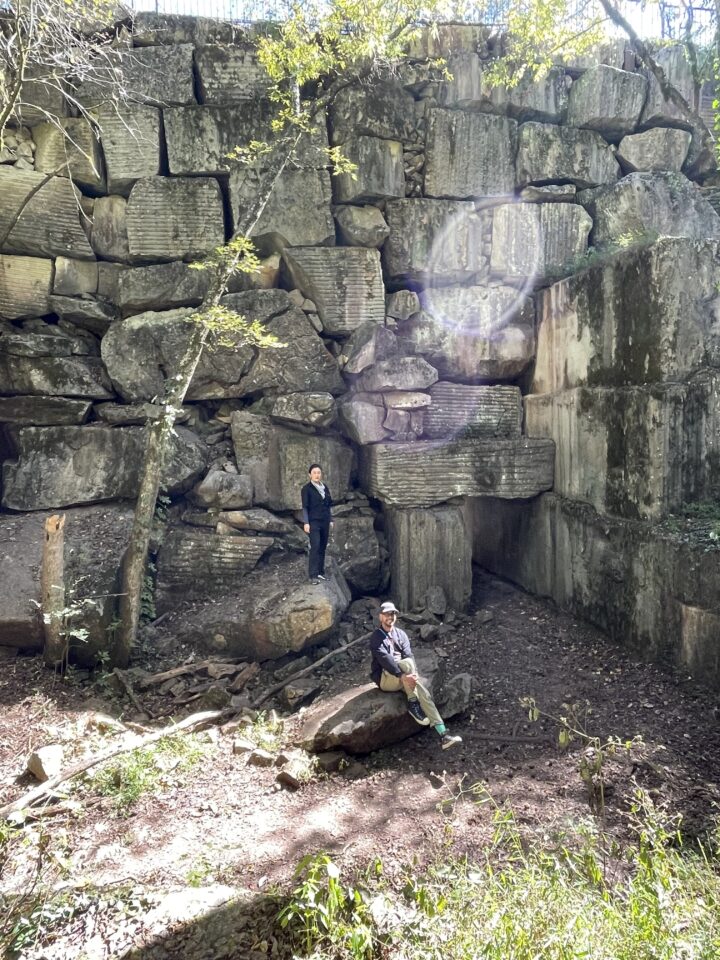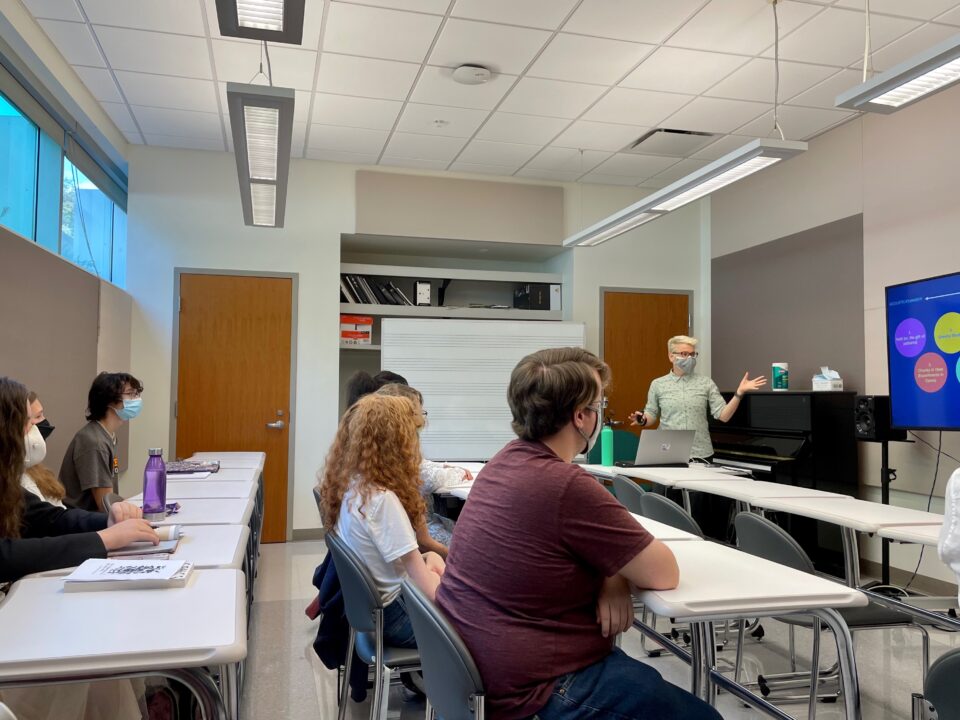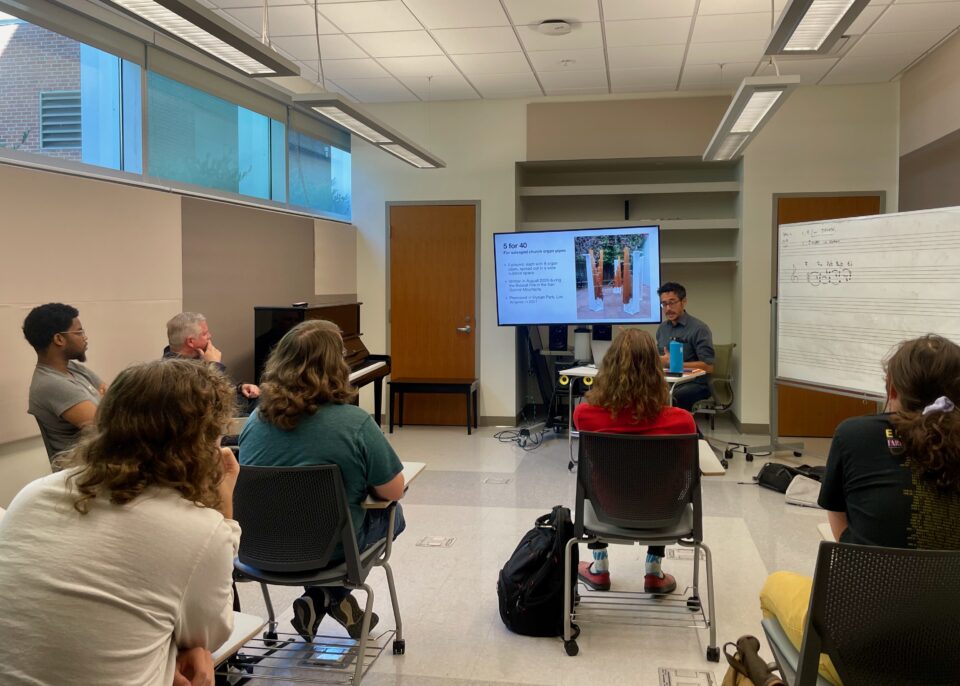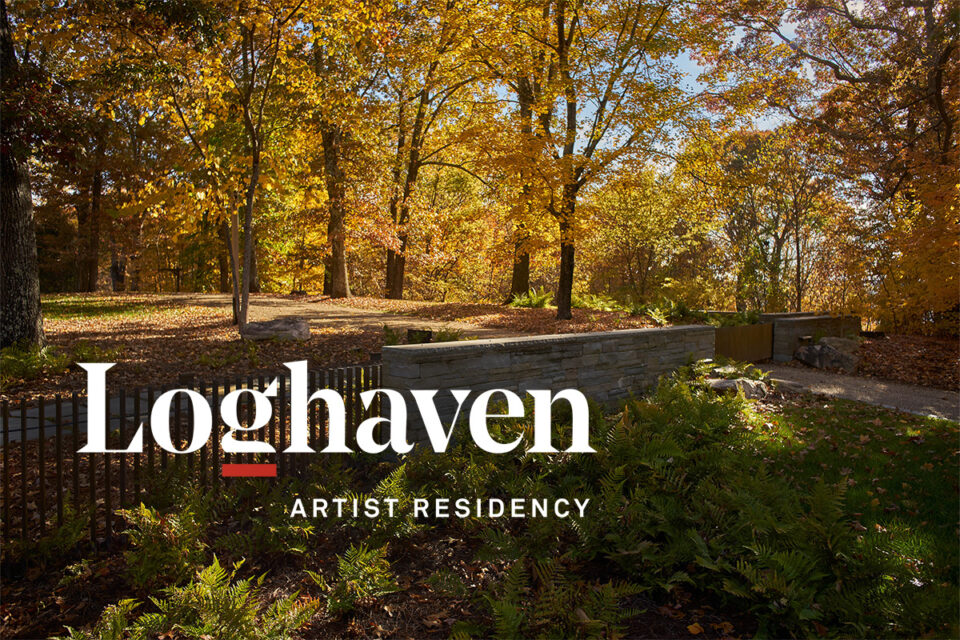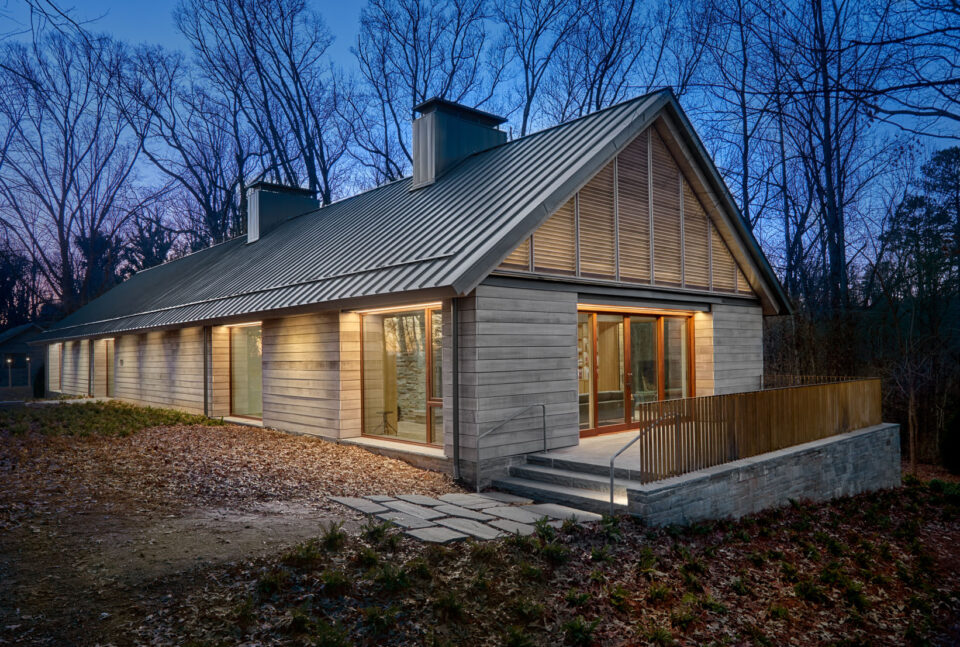Loghaven Artist Residency Announces Awardees including Anthony Green, DaEun Jung, Luftwerk Studio, Aaron Landsman, Michelle Tea, and Many Others.
Artists Will Work and Reside on the Loghaven Campus, Recently Awarded the American Institute of Architects (AIA) Highest Honor for Architecture.
Knoxville, TN – November 17, 2021– Loghaven Artist Residency, a residency for emerging and established artists in the fields of visual art, dance, music, writing, theater, and interdisciplinary work, announces its first residency awardees from the inaugural Open Call for Applications.
Artists Participating in Loghaven Residencies from January 2022 – January 2023:
These artists were selected from over 900 applications received in the Open Call for Applications by a national panel of artists, curators, performers, and other arts professionals based on the chief criteria of artistic excellence and creative potential.
Performance
_Daniel Corral
_David Cote
_Robin Frohardt
_Alexander Gedeon
_Levi Gonzalez
_DaEun Jung
_Aaron David Landsman
_Stephanie Zaletel
Music Composition
_Zach Baltich
_Majel Connery
_Shayna Dunkelman
_Bobby Ge
_Anthony Green
_Dorian Wood
Visual Arts
_Petra Bachmaier
_Sean Fader
_Sean Gallero
_Alena Mehić
_Carlie Trosclair
Writing
_Chanda Feldman
_Shruti Swamy
_Michelle Tea
_Keith Wilson
_Jane Wong
_Jenny Xie
Loghaven Artist Residency launched last year with artists nominated by a prestigious national panel with input from artists, arts leaders, and the Artist Communities Alliance.
Artists from the first year of the residency had the following words to say about the experience.
Everything is in place there for an artist to do her best work. Whether it’s working through chosen projects, or thinking through new ideas, the atmosphere at Loghaven is tuned to your needs. For artists accustomed to a dedicated studio space with lots of privacy and quiet it is ideal. The history and environment surrounding your cabin and studio is rich in inspiration. This is an opportunity that few get in their lifetime. – Mary O’Brien
In my usual working environment I have a multitude of distractions and obligations that take me out of my creative zone with annoying regularity. The level of focus I enjoyed during this residency has given me time to strategize on methods of creating a better, more productive work environment. – Mark Steven Greenfield
You can’t access that kind of interdisciplinary conversation just anywhere. I will leave here feeling respected, nurtured, and nourished; body, soul, practice. – Lara Avery
Loghaven artists become Fellows after finishing their residency. Current Loghaven Fellows include:
Aldwyth _ Lara Avery _ Lyndon Barrois Jr. _ Calvin Brett
Sandra Brewster _ Ann Carlson _ Lara Downes _ Addoley Dzegede
Sebastián Escalona _ Tia-Simone Gardner _ Jonathan González
Mark Steven Greenfield _ Ida Harris _ NIC Kay _ Amy Lam
Paula Matthusen _ Daniel McCormick _ Angélica Negrón _ Mary O’Brien
Craig Shepard _ Wang Jie _ Rhonda Wheatley _ Philip White
What Makes Loghaven Special
Loghaven Artist Residency provides artists with vital financial resources, an inspiring environment, professionally designed facilities, dedicated staff, and the time and space to create new work.
Loghaven Artist Residency features an AIA award-winning campus including historic, rehabilitated log cabins, a Performing Arts Studio, a Visual Arts Studio, and the 3,900-square-foot McDonough House with additional studio space and facilities for artists—all located on 90 acres of woodland, minutes from downtown Knoxville, Tennessee.
Loghaven Artist Residency offers:
- Facilities for dancers and theater makers—there are limited residencies that offer dancers and theater makers the facilities that are essential for their work. Loghaven has a professionally designed Performing Arts Studio and a Multidisciplinary Studio to support these practitioners.
- Spaces for collaborative artist groups—the number of artists working collaboratively has grown significantly, and few residences are designed to accommodate this type of practice. Loghaven’s studio spaces serve the needs of collaborative teams: all are large enough for group work, and three of the artist cabins are suited for an intensive live/work experience for a collaborative team.
- A stipend grant—Loghaven provides artists a weekly stipend grant for art supplies and other expenses associated with completing the residency. The stipend grant advances Loghaven’s commitment to removing financial barriers for artists, allowing the broadest possible participation in the residency.
- Ongoing support for Loghaven Artist Fellows—Loghaven supports artists during and after their residencies—helping to advance recognition of their work and fostering their careers over time. As just one part of this ongoing support, Loghaven Fellows are eligible for the opportunity to return to Loghaven for future sessions, including a two-week, alumni-only residency.
- Diverse cohorts of artists—Loghaven is dedicated to supporting diverse cohorts of artists. Artist residents include individuals with a range of backgrounds, disciplines, and ages.
Loghaven Artist Residency is fully funded by the Aslan Foundation.
Loghaven’s Early Advisors
Early advisors who have helped provide counsel in the development of Loghaven Artist Residency include artists, performers, writers, curators, scholars, consultants, and arts administrators with decades of experience across multiple arts disciplines and sectors.
- Eve Beglarian—Beglarian’s chamber, choral, and orchestral music has been commissioned and performed by the Los Angeles Master Chorale, the American Composers Orchestra, the Bang on a Can All-Stars, the Chamber Music Society of Lincoln Center, among many others.
- Afa Dworkin—Named one of Musical America’s Top 30 Influencers in the nation and one of Detroit Crain’s 40 Under 40, Dworkin is a musical thought leader and cross-sector strategist driving national programming that promotes diversity in classical music.
- Suzanne Fetscher—Fetscher has 25 years of experience as an executive director of international residency programs. She served as Founding President and CEO of McColl Center for Art + Innovation in Charlotte, North Carolina and is now an independent cultural nonprofit consultant.
- Olga Garay-English—Garay-English is an arts consultant with projects in California, nationally, and internationally. For the past three years she was the Executive Director of the John Anson Ford Theatres and was previously the Executive Director of the City of Los Angeles Department of Cultural Affairs (DCA). She served as Founding Program Director for the Arts for the Doris Duke Charitable Foundation, one of the largest national arts funders in the United States.
- Tempestt Hazel—Hazel is a writer, curator, and founder of Sixty Inches From Center, a Chicago-based arts publication and archiving initiative that supports writing and artistic practices across the Midwest. She is also the Arts Program Officer at the Field Foundation of Illinois.
- Lisa Funderburke Hoffman—Funderburke Hoffman is Executive Director of the Alliance of Artists Communities. She works with residencies, foundations, and other non-profits on improving the efficacy of teams and programs. She has held leadership posts at McColl Center for Art + Innovation and the Charlotte Nature Museum, and currently serves on a variety of committees and boards for organizations including Grantmakers in the Arts, the Institute of Museum and Library Services, National Assembly of State Arts Agencies, and the Performing Arts Alliance.
- Kiese Laymon—Laymon is the Ottilie Schillig Professor of English and Creative Writing at the University of Mississippi. He served as the Distinguished Visiting Professor of Nonfiction at the University of Iowa in fall 2017. Laymon is the author of the novel, Long Division; a collection of essays, How to Slowly Kill Yourself and Others in America; and Heavy: An American Memoir.
- Sharon M. Louden—Louden is an artist, educator, advocate for artists, editor of the Living and Sustaining a Creative Life series of books, and the Artistic Director of the Visual Arts at Chautauqua Institution. Louden’s work is held in public and private collections including the Whitney Museum of American Art, National Gallery of Art, and Yale University Art Gallery, among others.
- Susan Moore—Moore is the Director of Programs for writers at Literary Arts. She directs the Oregon Book Awards & Fellowships, oversees the writing classes and Delve seminars, and is the author of That Place Where You Opened Your Hands, the winner of the Juniper Prize in poetry.
- Ali Rosa-Salas—As Director of Programming at Abrons Arts Center/Henry Street Settlement, Ali Rosa-Salas develops the Center’s live programming, exhibitions, and residencies. As an independent curator, she has produced visual art exhibitions, performances, and public programs with the American Realness Festival, AFROPUNK, Barnard Center for Research on Women, Brooklyn Arts Exchange, Danspace Project, DISCWOMAN, Knockdown Center, MoCADA, Weeksville Heritage Center, and more.
- Mark Sloan—Sloan has been the Director and Chief Curator of the Halsey Institute of Contemporary Art at the College of Charleston since 1994. In his 34-year career, he has organized hundreds of exhibitions, ranging from contemporary Japanese installation art to 19th-century Baluchi tribal weavings.
Loghaven’s Architecture, Buildings, and Natural Environment
Loghaven partnered with Sanders Pace Architecture for the rehabilitation of the historic log cabins on its campus and the design of three contemporary structures: the Visual Arts Studio, the Performing Arts Studio, and the McDonough House, which serves as a central gathering place for resident artists and features additional studio space and facilities. In April of 2021, Loghaven and Sanders Pace Architecture received the national American Institute of Architects (AIA) Architecture Award. This award recognizes Loghaven’s campus in its entirety as an outstanding example of excellence in contemporary architecture, and is the highest honor that AIA bestows on new projects. Past recipients of the award include The Broad Museum (Los Angeles), St. Ann’s Warehouse (New York), and the Smithsonian National Museum of African American History and Culture (Washington D.C)
The team painstakingly worked on the log cabins that gave Loghaven its name, so that they could serve as artist living spaces. The five cabins are on a private, tree-shaded road and each has its original logs, a working fireplace, a porch or balcony, and artist working spaces. Kitchens and bathrooms have been modernized with sensitivity to historic preservation, and all cabins have amenities to ensure a fostering living and working environment. Working alongside Sanders Pace Architecture were three specialty consultants: Acoustic Distinctions (New York, NY), specializing in acoustics and audiovisual design; Sighte Studio (New York, NY), focusing on lighting; and Smith Seckman Reid (Nashville, TN), consulting on sustainability and MEP.
The 3,900-square-foot McDonough House has a Multidisciplinary Studio, a professionally designed audiovisual and acoustics system, a range of equipment for artists to use in creating new work, and a dining area for communal meals. The two free-standing, cantilevered artist studios are designed to “float” over the ground with eight-foot-tall windows looking out onto the adjacent hillside. The Performing Arts Studio features an 860-square-foot sprung floor, a professionally designed sound system, and an abundance of natural light. The Visual Arts Studio has both natural and directional light, a separate wet area, an enlarged loading door, and equipment for creating a range of different work.
The newly constructed buildings at Loghaven have been designed to enter a dialogue with both the natural environment and the historic cabins. The McDonough House has a similar visual language to the nearby cabins, elevating traditional building materials to create a restrained and harmonious contemporary addition to the campus. The placement of the McDonough House was precisely designed to ensure the root system of adjacent trees would not be disturbed, and the cantilevered artist studios allow surrounding plant life to thrive. All of the contemporary buildings have expansive views of Loghaven’s grounds.
The team has dedicated equal time and care to Loghaven’s natural environment. Over the decades the native flora on the site had been squeezed out by invasive plants that in some places became so dense that walking through parts of the grounds was nearly impossible. Loghaven partnered with a local arborist as part of a decade-long project to restore the surrounding woodlands. Through enormous efforts by the Loghaven property team, the invasive plants around the cabins have been removed, native trees and plants are thriving, and the natural springs on the site have been protected.
Loghaven’s History
While archaeological excavations reveal that humans have inhabited the Loghaven area for 9,000 years, the history of the Loghaven community dates back to 1915, when Knoxville resident Martha (“Myssie”) Thompson acquired her first three acres of land along a ridge in South Knoxville. Although new industries were booming in the city, this high ridge remained isolated and wooded—the perfect spot for Thompson’s innovative idea.
Thompson hoped to support her family by constructing rental homes. Between 1932 and 1935, during the Great Depression, she labored alongside a local carpenter to design and build log cabins on what she called “the hill.” This cluster of homes became “Log Haven”: a community for Thompson, her family, and many unconventional tenants. Early occupants included Tennessee Valley Authority (TVA) workers building the nearby Norris Dam; Alfred Clauss, a TVA exhibit director and architect; radio personality Lowell Blanchard; as well as Knoxville News-Sentinel columnist Bert Vincent, known for his popular column “Strolling.” Later, Loghaven became home to professors and their families, followed by students. As one University of Tennessee student recalls from the 1960s: “Loghaven was a place everyone dreamed of living. I tried to get in and couldn’t.” In 1978 Chris Whittle, along with his partners in the 13-30 Corporation Phillip Moffitt and Edward Smith, formed a partnership called “The Loghaven Community.” From the woods of Loghaven, they built a publishing empire. 13-30 Corporation acquired Esquire magazine in 1979 and had 600 employees by 1986. Many of the early employees lived at Loghaven. One such resident referred to it as a “domicile for various bohemian-outdoorsy types.”
In 2005, a developer purchased the site with the intention of building condominiums. Loghaven residents rallied to save the community from destruction. Forming the Friends of Loghaven, they posted handmade signs reading: “Save Loghaven” and “Greedy Developers Not Welcome Here.” The grassroots movement prompted the city council to table rezoning, which stalled development but left Loghaven with an uncertain future.
In 2007, Jim and Lindsay McDonough, board members of the Aslan Foundation, visited Loghaven and learned of its potential demise. They became dedicated to saving it from destruction. Recognizing the property as an essential part of Knoxville’s cultural heritage, the Aslan Foundation purchased Loghaven in 2008. Since Loghaven’s cabins had long been a retreat for unconventional, creative people, the Aslan Foundation determined that an artist residency was the ideal use for the site.
Loghaven’s Location
Loghaven is minutes from the center of Knoxville, where historic buildings frame a walkable downtown with landmark theaters and newly constructed music venues, a robust culinary scene including a James Beard Award-winning chef, as well as locally owned breweries, shops, and studios lining the streets and extending into nearby neighborhoods. In contrast to many other flourishing cities in the South, Knoxville has grown and evolved while remaining livable and affordable.

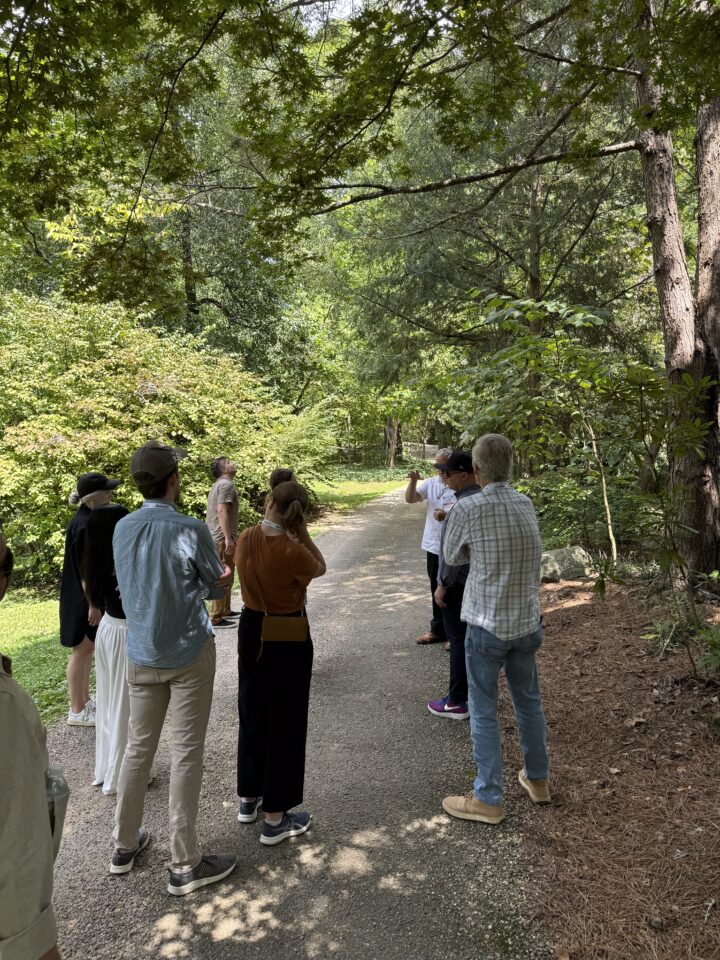
 .
.

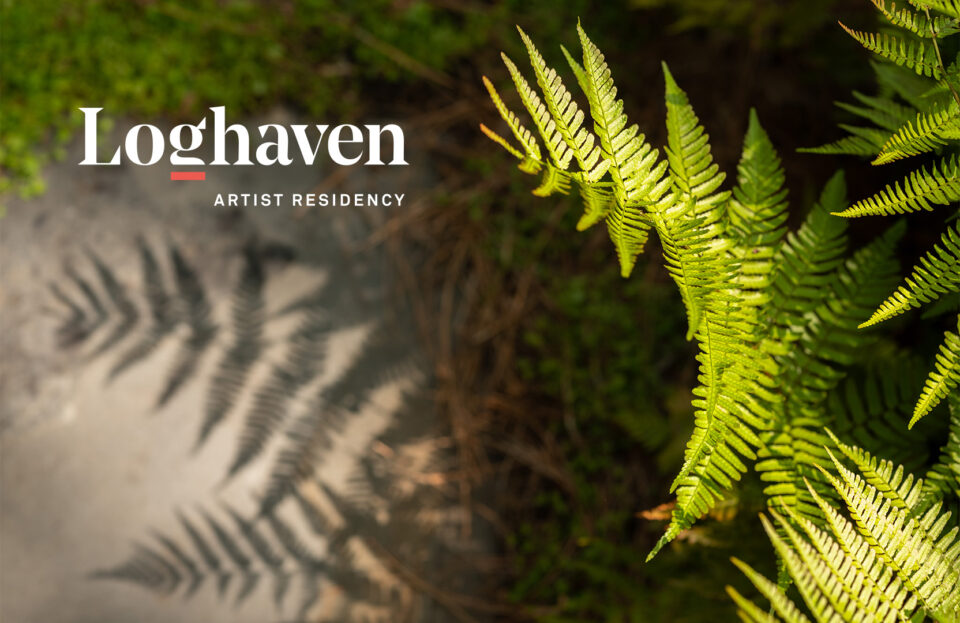
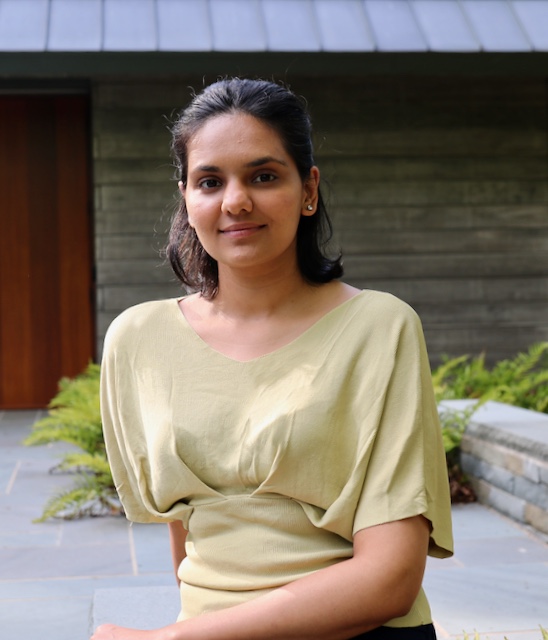
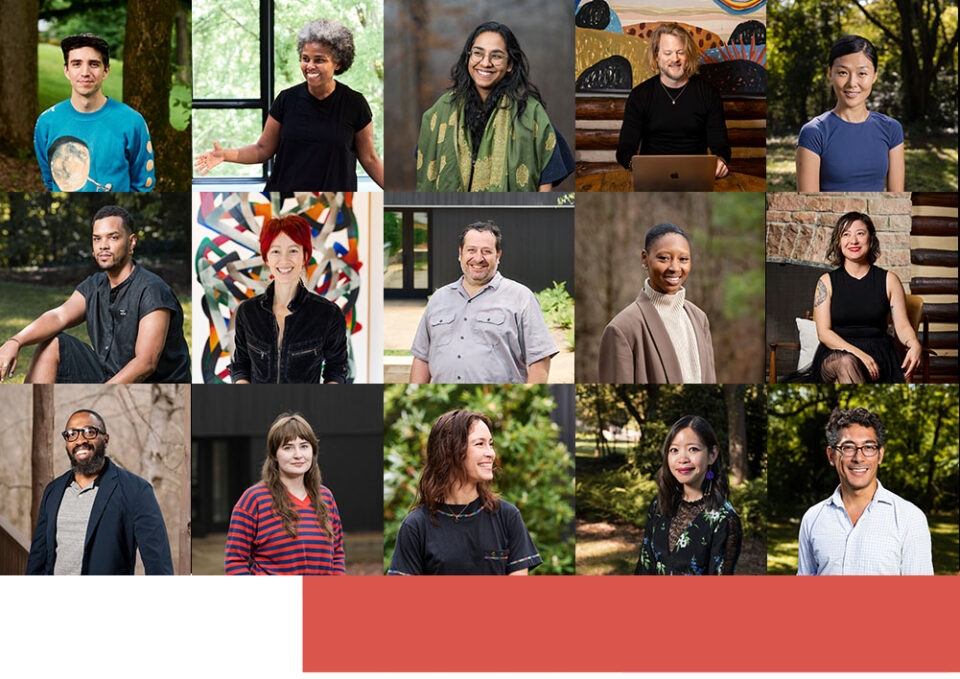
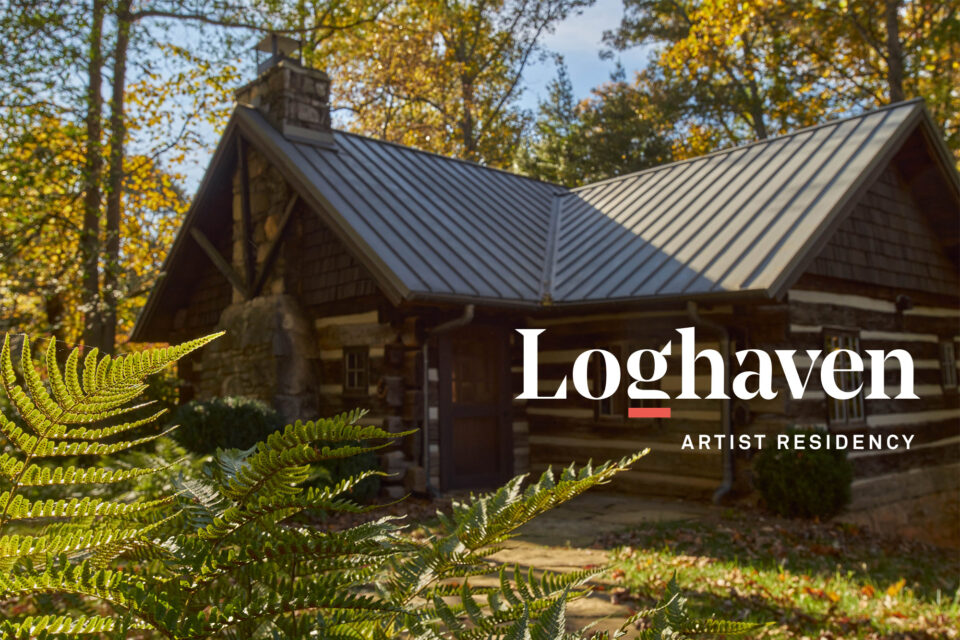

 On Friday afternoons during residency sessions, we offer residents optional curated off-site trips around Knoxville and the surrounding area. It’s an invitation to get off campus and learn more about our city. In the past, tours have included the Knoxville Museum of Art, the Beck Cultural Center, and the Civilian Conservation Corps-built Norris Dam. One reoccurring tour location is Ijams Nature Preserve’s Meads Quarry and Keyhole rock structure, located just ten minutes from Loghaven’s campus. Ijams is one of our favorite stops because of its unique ability to speak to both the region’s history and its future.
On Friday afternoons during residency sessions, we offer residents optional curated off-site trips around Knoxville and the surrounding area. It’s an invitation to get off campus and learn more about our city. In the past, tours have included the Knoxville Museum of Art, the Beck Cultural Center, and the Civilian Conservation Corps-built Norris Dam. One reoccurring tour location is Ijams Nature Preserve’s Meads Quarry and Keyhole rock structure, located just ten minutes from Loghaven’s campus. Ijams is one of our favorite stops because of its unique ability to speak to both the region’s history and its future.